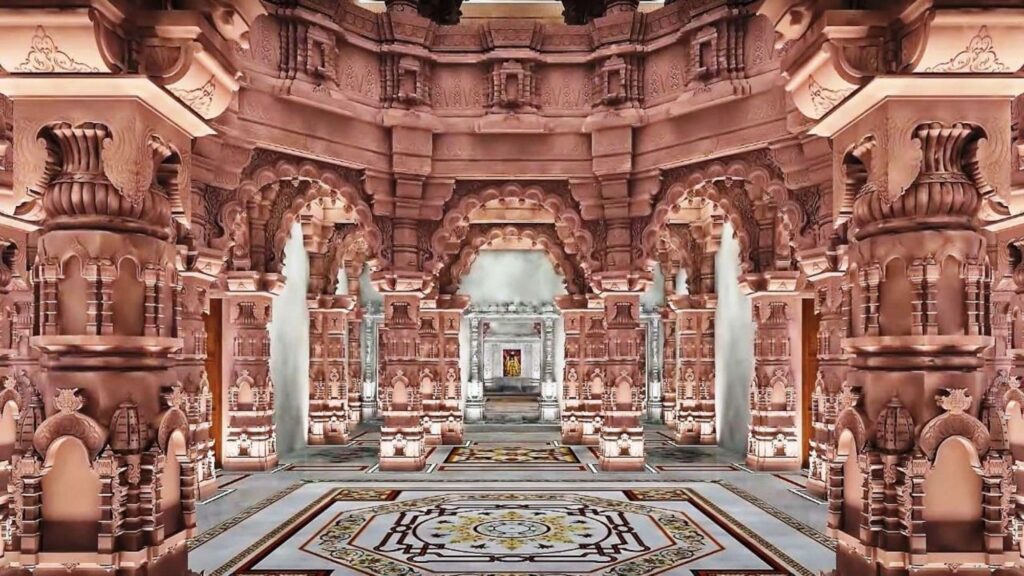Traditional Architecture and Construction

Ram Mandir in Ayodhya is built in the traditional Nagara style. The total width is 250 feet and the height is 161 feet. The 3-storey temple has a total of 392 pillars and 44 doors. Each floor is 20 feet tall. The temple covers an expansive 71 acres. The main temple area covers 2.67 acres and showcases 390 pillars, 46 doorways, and 5 mandaps. There are five Mandaps or halls, namely, Rang Mandap, Sabha Mandap, Prarthna, Nritya Mandap, and Kirtan Mandaps.
The entry is from the east, and devotees will have to climb 32 stairs through the Singh Dwar. There are facilities available such as lifts and ramps for the convenience of the specially abled and elderly.
At the four corners of the compound, four different temples can be seen dedicated to different gods. Temples dedicated to Lord Surya, Goddess Bhagwati, Lord Ganesha, and Lord Shiva can be seen. The temple of Maa Annapurna is on the northern side, while a Hanuman temple is on the southern side.
A 14-metre-thick layer of roller-compacted concrete (RCC) has been used for the construction of the Ayodhya Ram temple. It has many indigenous technologies aiming at environmental water conservation.
Construction Cost of Ayodhya Ram Temple
According to Shri Ram Janmabhoomi Teerth Kshetra, the construction of the Ram Mandir has cost close to ₹1,800 crore Whereas a PTI report mentioned that the trust spent ₹ 900 crore on the construction of the Ram Mandir between February 5, 2020 and March 31, 2023.
Some Other Interesting Facts
- In the main Garbh Griha, there are many idols of Ram Lalla. Also, there are multiple mandaps, including Rang Mandap & Nritya Mandap. A total of five mandaps are there. Devotees enter the temple after climbing 32 steps through Singh Dwar.
- The architects: According to recent reports, they belong to the famous Sompura family, well-known for crafting more than 100 temples worldwide, including the famous Somnath Temple. Led by Chief Architect Chandrakant Sompura and supported by his sons Ashish and Nikhil, they have established a long-lasting legacy.
- No iron or steel used: As per many reports, the Ram Mandir has been completely built of stones, and no steel or iron was used. The temple is built to last at least 1,000 years.
- A Pilgrim Facility Centre with a 25,000-person capacity is under construction, offering medical and locker facilities. Additionally, future-ready Artificial Intelligence surveillance is likely to be introduced to ensure security.
- Artistic Marvels: The temple has 390 pillars,
- With 16-28 idols of deities on each of the 390 pillars, the temple showcases intricate carvings of mythological figures, maintaining consistency through exclusive craftsmanship.
- The temple has 390 pillars, each decorated with 16-28 idols of deities. These pillars showcase detailed carvings of mythological figures, all crafted beautifully with devotion and hard work.










